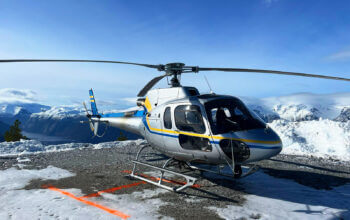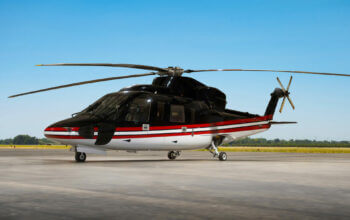Estimated reading time 7 minutes, 43 seconds.
The General Aviation Manufacturers Association (GAMA) revealed positive news at its 2023 state of the industry press conference on Feb. 22.
GAMA, which represents about 150 global organizations involved in all aspects of general and business aviation, recaps year-end aircraft shipment and billing numbers each February.
Overall, GAMA chairman Eric Hinson and president Pete Bunce were upbeat about industry activity in 2022, relaying that the average price of a general aviation (GA) aircraft is now just over US$8 million.
Piston aircraft manufacturers delivered 1,524 units in 2022, representing an 8.2 percent increase over the previous year. Billings totalled US$977 million, an increase of 16.7 percent. With the average age of the piston aircraft fleet being 48 years old, there is plenty of opportunity for growth in this sector. However, one of the biggest challenges will be finding an environmentally-friendly alternative to 100 octane low-lead aviation gasoline (100LL). The industry-led EAGLE (Eliminate Aviation Gasoline Lead Emissions) initiative aims to transition piston aircraft to lead-free fuels by 2030.

Turning to the turboprop sector, 582 units were shipped in 2022, an increase of 10.4 percent. This marks the third consecutive annual increase for turboprop manufacturers, who also saw billings rise 15.1 percent to US$2 billion.
While business jet manufacturers delivered 712 units – just two more than in 2021 – their collective billings were up 4.5 percent to US$19.8 billion in 2022. The largest share of these deliveries came from the midsize sector, which includes aircraft weighing between 12,500 pounds and 50,000 lbs (5,700 kilograms to 22,680 kg). North America accounts for 68 percent of business jet market share, with Europe accounting for just 16 percent and Latin America six percent.
Piston helicopters had a good year in 2022, with 194 units shipped – an increase of 7.2 percent. Billings also rose significantly to US$88.3 million, a 9.9 percent increase over 2021.
Finally, 682 turbine helicopters were delivered in 2022, up 7.6 percent over the previous year’s figures. Manufacturers billed US$3.6 billion, an increase of 4.4 percent.
Worth noting is the fact that these manufacturer numbers do not include Leonardo’s 2022 results, which will be reported in March.
The avionics market continues to be driven by retrofits (48.2 percent) and forward fits (51.8 percent), with the sector enjoying its 10th consecutive quarter of increasing sales. Total 2022 sales exceeded US$2.8 billion, up 21.5 percent over 2021. Nearly 75 percent of avionics sales volume occurred in North America.
“Today, our aircraft are substantially more capable,” said Hinson, comparing them to aircraft of the 1970s. “We have business jets that can fly nearly halfway around the world; we have aircraft that can cruise at very close to the speed of sound while carrying significantly higher payloads. We have engines that burn 30 to 50 percent more efficient . . . and avionics that make aircraft safer and more reliable. We even have aircraft that are capable of landing themselves if the pilot is incapacitated. All of that innovation occurred because we had a regulatory environment that allowed us to continue to develop and innovate in GA. It’s incredibly important to have that kind of environment as we move forward.”
Bunce added: “We will be looking for Congress to focus the FAA on improving their processes to facilitate the certification of new technologies, as well as support their validation efforts globally to deliver safety, performance, and sustainability benefits.”
Bunce also noted that GA’s contribution to the economy should be understood by everyone.
“This is an aviation nation, and general and business aviation make commerce happen. Recently, GA has been singled out for its impact on the environment – but GA is much broader than just moving people from A to B,” he said, noting essential services such as air ambulance, firefighting, pilot training, agricultural flying, and humanitarian efforts.
Pointing to recent statistics, Hinson said there were 45,000 daily GA flights in the U.S. during the first 10 days of February alone – and this does not include helicopters. On average, those flights went to about 5,000 different airports. By contrast, scheduled service in the U.S. goes to less than 400 airports, highlighting the important reach of GA.
“We connect people, we connect products, and we connect services,” he said.
GA is also a technology incubator for aviation in general. In business aviation, the pace of modernization has increased post-2015. Fuel efficiency is being driven by innovations such as advanced materials and processes; aerodynamic and structural efficiencies; engine performance efficiencies; weight reductions; optimizing sustainable aviation fuel; and augmenting alternative propulsion.
Aside from recapping 2022 performance statistics and discussing priorities, GAMA wrapped up its event with a five-member leadership panel discussion.

Led by Pratt & Whitney Canada president Maria Della Posta, young industry members discussed what attracted them to the GA industry, public perceptions of aviation, and GA’s need for workforce renewal.
Watch GAMA’s full press conference here. Find GAMA’s 2022 year-end report here.








